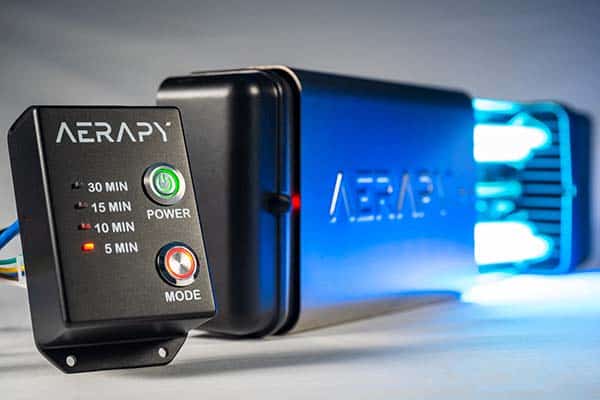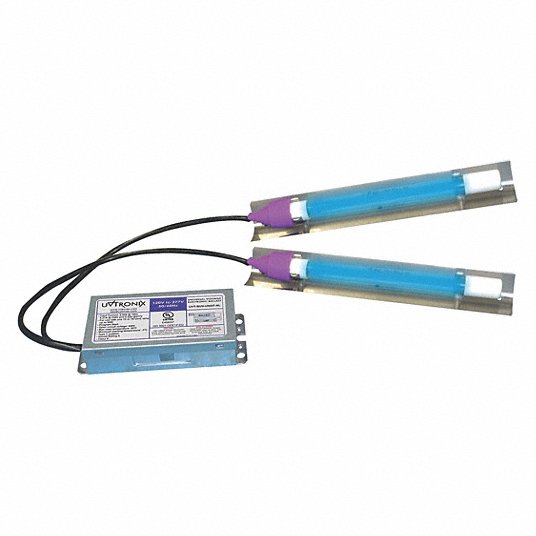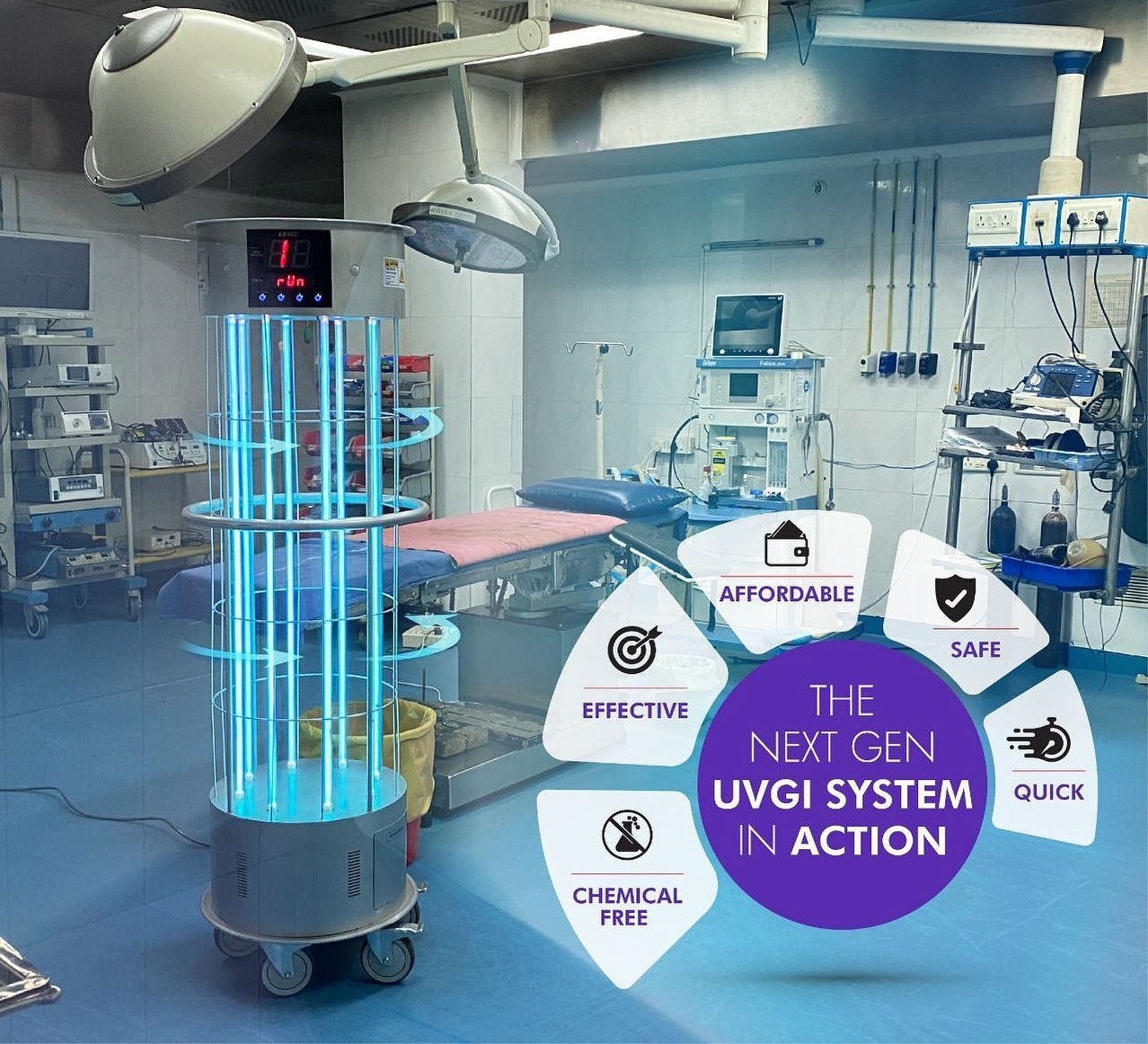Checking Out UV Sanitation: A Necessary Tool in the Fight Versus Hazardous Virus
As the globe faces an ever-increasing risk from harmful virus, the search for reliable approaches of disinfection has actually come to be an urgent top priority. One such technique that has garnered substantial attention is UV disinfection. In this discussion, we will certainly dive into the world of UV sanitation, revealing its prospective as a vital device in the battle against harmful pathogens.
How Does UV Sanitation Work?
UV sanitation functions by using ultraviolet (UV) light to get rid of unsafe microorganisms and prevent their spread. This extremely effective method involves making use of UV radiation to interfere with the DNA and RNA of bacteria, making them unable to replicate and creating their best devastation.
When UV light is utilized for disinfection, it is usually released from a lamp or light bulb that generates a details wavelength of UV-C light. uv surface disinfection. This wavelength, varying from 200 to 280 nanometers, is especially reliable at passing through the external cell wall of microorganisms, viruses, and various other microorganisms. Once inside the cell, the UV radiation targets and harms the genetic product, stopping the bacterium from reproducing and triggering infection
UV disinfection systems are developed to emit the suitable intensity and period of UV light to guarantee effective microorganism removal. The dose of UV light required for disinfection depends upon factors such as the kind of microbe, its resistance to UV radiation, and the certain application. Furthermore, the system should be very carefully crafted to make sure correct direct exposure of the target virus and to avoid any kind of potential harm to humans or the environment.
The Benefits of UV Disinfection
UV sanitation offers a multitude of advantages in successfully eliminating harmful pathogens and reducing the danger of infection. Unlike traditional sanitation approaches that rely on chemicals, UV disinfection utilizes ultraviolet light to ruin the DNA and RNA of microorganisms, providing them incapable to reproduce and cause infections.
An additional considerable advantage of UV disinfection is its performance in eliminating a wide range of pathogens. UV light has actually been proven to effectively get rid of bacteria, viruses, fungis, and protozoa, consisting of those that are immune to typical disinfectants. This broad-spectrum performance makes UV sanitation a functional tool in numerous setups, such as health care centers, water therapy plants, and food processing sectors.
In addition to its efficiency, UV disinfection additionally offers rapid sanitation cycles. Unlike various other approaches that require extensive get in touch with times or repetitive applications, UV sanitation can accomplish significant pathogen reduction immediately. This fast and reliable procedure permits for improved efficiency, decreased downtime, and increased overall functional efficiency.
Additionally, UV sanitation is a non-contact approach, which suggests that it does not need direct physical contact with the surfaces or things being decontaminated. This function makes it ideal for usage on delicate equipment and sensitive materials that may be harmed or affected by other sanitation methods.
Applications of UV Sanitation in Health Care

UV sanitation is additionally utilized in the sterilization of medical equipment and tools (uv surface disinfection). The high strength of UV light can effectively eliminate bacteria, viruses, and other microbes, making sure that clinical devices are complimentary and secure from contaminants. In addition, UV disinfection is utilized in water treatment systems within health care facilities. UV light is qualified of inactivating unsafe germs, viruses, and parasites, making the water safe for intake and minimizing the danger of waterborne infections.
Additionally, UV sanitation modern technology is employed in the disinfection of health care uniforms and individual protective tools (PPE) By utilizing UV light, healthcare click for source specialists can guarantee that their uniforms and PPE are devoid of pathogens, stopping the transmission of infections between individuals and medical care workers.
UV Disinfection in Public Spaces
Public spaces are progressively executing UV sanitation modern technology as an essential action to deal with the spread of dangerous virus. With the recurring international pandemic and the consistent danger of contagious diseases, the requirement for efficient sanitation methods in public locations has become paramount. UV sanitation uses a reputable and reliable option hereof.

UV disinfection systems utilize ultraviolet light to shut down the DNA and RNA of microorganisms, viruses, and other microorganisms. The usage of UV disinfection modern technology in public spaces not just aids in minimizing the risk of infection yet also infuses confidence amongst the public regarding their security.
As public spaces proceed to adjust to the difficulties posed by contagious diseases, UV disinfection modern technology plays a vital duty in guaranteeing a tidy and safe atmosphere. By applying such actions, public areas can properly reduce the spread of dangerous virus and add to the total health of the community.
The Future of UV Disinfection Innovation
As the need for enhanced disinfection approaches proceeds to grow in action to the continuous global pandemic and the consistent threat of transmittable illness, the future of UV sanitation innovation holds promising innovations in making sure a lot more efficient and reliable pathogen obliteration in various settings.

One location of innovation is the development of more portable and mobile UV sanitation tools. Furthermore, advancements in automation and robotics are being discovered to improve the efficiency and effectiveness of UV sanitation processes.
Another area of expedition is the usage of UV sanitation in air purification systems. By integrating UV-C lights into a/c systems, airborne microorganisms can be properly reduced the effects of, lowering the risk of transmission in interior atmospheres.
Additionally, scientists are investigating using UV sanitation in food handling facilities to make Find Out More sure the safety and top quality of food products. UV-C light has actually been located to be reliable in removing foodborne microorganisms, providing a chemical-free choice to standard disinfection techniques.
Conclusion
Finally, UV disinfection is a crucial tool in the battle versus unsafe virus. Its efficiency in eliminating germs, viruses, and other microorganisms makes it a useful technology in medical care settings and public areas. With its capacity to provide a eco friendly and chemical-free approach of disinfection, UV innovation holds wonderful possible for the future. Its prevalent application can add to the prevention of infections and the renovation of public health.
UV disinfection systems are made to produce the proper strength and duration of UV light to make sure effective virus elimination. The dose of UV light needed for disinfection depends on aspects such as the kind of bacterium, its resistance to UV radiation, and the particular application. Unlike standard sanitation methods that count on chemicals, UV disinfection makes use of ultraviolet light to ruin the DNA and RNA of bacteria, providing them unable to recreate and cause infections.In addition to its efficiency, UV pop over to this site sanitation additionally supplies quick sanitation cycles. One of the major applications of UV disinfection in health care is in the disinfection of client areas and running theaters.